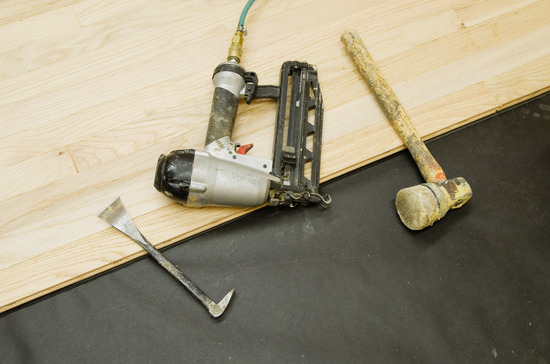
Tongue and groove flooring is a method of flooring that holds each piece in place with a system of interlocking pieces called tongues and grooves. One side of the panel is rounded out in a tongue. This rounded out side fits well with the concave side of the next panel, locking the two together. Tongue and groove flooring is a much more secure method of flooring compared to the standard flat panel flooring.
Tongue and groove flooring works much like a puzzle, allowing the installer to fit smaller pieces together in a tight pattern to form a much larger finished product. Tongues and grooves work to keep individual pieces together, while the pressure caused by the tight space works to keep the entire floor in place.
While this system of flooring works well for keeping panels in place, it also takes into account the need for movement. With the changes in the weather, every bit of your home will expand or shrink a bit. Tongue and groove flooring allows for these minor shifts while still holding everything together.
While tongue and groove flooring has many benefits, there are a few things to be aware of. Tongue and groove flooring is probably not ideal for moist areas (like outdoor living spaces or decks) as these locations need flooring that is better able to breathe. The water or humidity in these locations could cause the panels to warp or swell, leaving the floor with a less appealing appearance.
If you do decide on tongue and groove flooring, take your time choosing the exact look you want. Tongue and groove flooring becomes exponentially more difficult to paint, stain, etc. the further along in the installation process you get. So when you find a look you like, it’s bets to stick with it.

For all of your Denver Hardwood Flooring needs visit our site today.